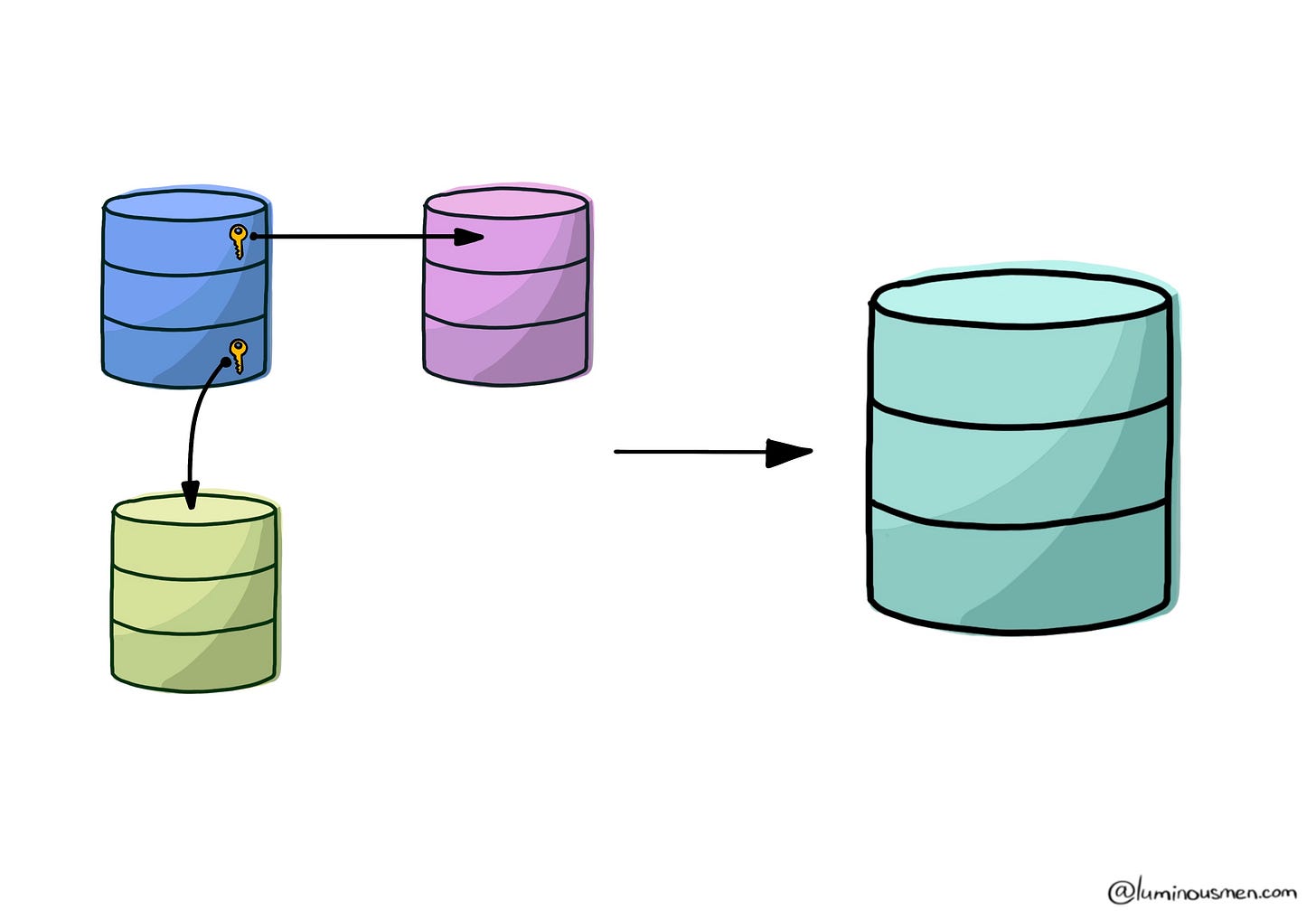Mastering Database Design: Denormalization
Normalization builds the library; denormalization opens the coffee shop inside it
Normalization is like designing a logical world; denormalization is making it livable. — Some Wise Data Engineer
Ever wonder if your database design is holding you back? You've normalized every table, and your queries now crawl at a snail's pace. Maybe it's time to shake things up with denormalization?
Welcome to the other side of database design — denormalization.
What is Denormalization?
Denormalization isn't just breaking the rules for fun — it's a deliberate optimization strategy. While normalization aims to organize data into tidy, non-redundant schemas, denormalization trades a bit of that order for one critical goal: speed.
Speed can become a problem in highly normalized databases and it all because of joins.
Joins are the glue that holds normalized tables together, but they're not free. Every join operation requires the database to:
Scan and fetch rows: The database retrieves matching data from multiple tables, often hopping across different parts of the disk. This disk I/O overhead slows queries down, especially if join keys aren't indexed.
Match and combine rows: The engine compares data row by row, which can become resource-intensive with large datasets.
Handle intermediate results: When the results of joins don't fit in memory, the database writes them to disk or recomputes them, adding further latency.
Coordinate across nodes: In distributed databases, joins can involve shuffling rows across networked nodes, adding even more complexity and delays.
💡 Joins involving properly selected keys and well-configured indexes are fast. The database doesn't fetch raw rows for comparisons — it uses key hashes, minimizing costly disk reads.
All of this works beautifully for small datasets or occasional queries, but when you're running millions of joins daily — say, in an analytics dashboard or reporting tool — performance bottlenecks quickly pile up.
You're getting an exclusive preview of my latest article! Want to dive deeper? The full story is just a click away:





